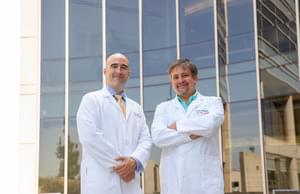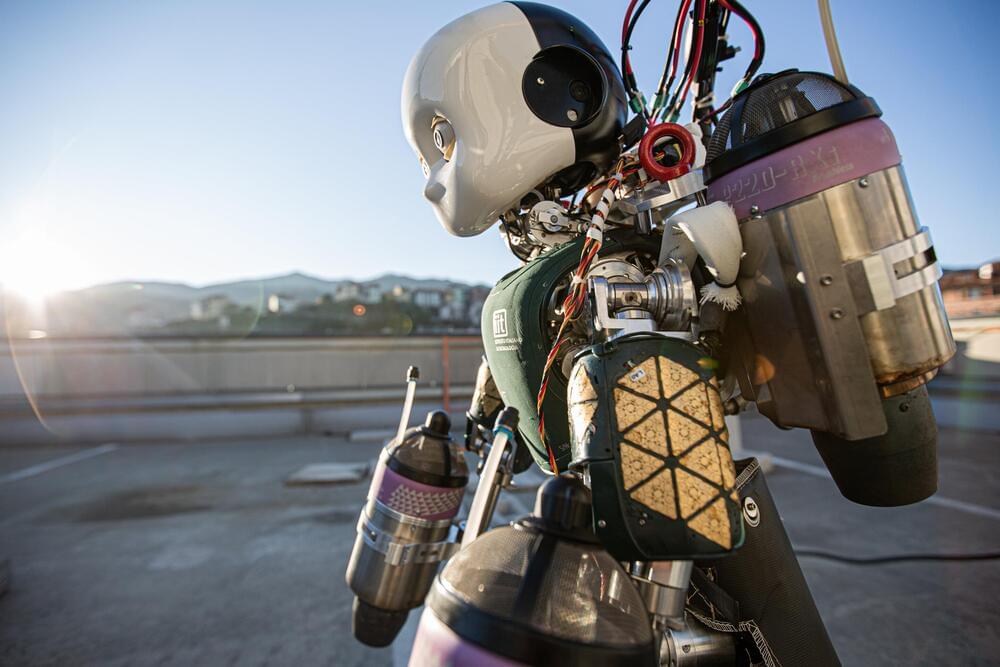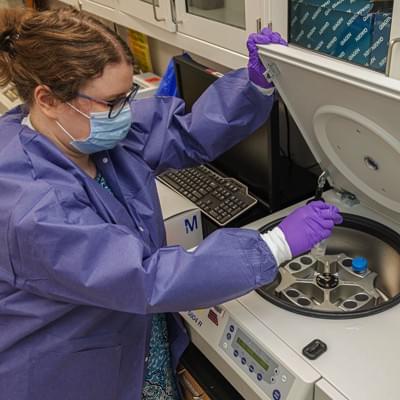Scientists have identified unique “indicators” in the blood of patients with severe and fatal Covid, paving the way for simple diagnostic tests to help doctors identify who will go on to become critically ill.
SpaceX lands 100th Falcon booster
Posted in materials, satellites
Exactly six years after its first successful recovery, SpaceX has landed a Falcon booster for the 100th time.
On December 21st, 2015, the first Falcon 9 V1.2 Full Thrust (Block 1) rocket lifted off from SpaceX’s Cape Canaveral LC-40 launch pad on the company’s return-to-flight mission after a catastrophic in-flight failure just six months prior. Unwilling as ever to waste an opportunity, no matter how important the mission, SpaceX – on top of debuting a major Falcon 9 upgrade – chose to take advantage of the return to flight to attempt to land a Falcon booster back on land for the first time ever. Ultimately, on top of successfully deploying multiple Orbcomm OG2 communications satellites in orbit for a paying customer, Falcon 9 booster B1019 sailed through its boostback, reentry, and landing burns without issue. About nine minutes after liftoff, the rocket ultimately touched down on a concrete “landing zone” just a few miles from where it lifted off with uncanny ease relative to SpaceX’s numerous failed attempts in the ~18 months prior.
Exactly six years later, on December 21st, 2021, Falcon 9 booster B1069 lifted off from Kennedy Space Center (KSC) Pad 39A with an upgraded, flight-proven Cargo Dragon in tow for SpaceX’s 24th International Space Station (ISS) resupply mission. CRS-24 also marked the company’s 31st and final launch of 2021, representing more successful Falcon launches completed in a single year than SpaceX had even attempted in its entire nine-year history up to the point of that first successful booster landing.
Some engineered living materials can combine the strength of run-of-the-mill building materials with the responsiveness of living systems. Think self-healing concrete, paint that changes color when a specific chemical is detected or material that could reproduce and fill in a crack when one forms. This would revolutionize construction and maintenance, with wide-reaching economic and environmental implications.
Seeing this new category of adaptive materials on consumer shelves may be a ways off. Still, critical early research from the University of Minnesota sheds new light on this exciting advancement, which shows promise beyond building materials, including biomedical applications.
In a new study in Nature Communications, researchers from the College of Biological Sciences demonstrate how to transform silica — a common material used in plaster and other construction materials — into a self-assembling, dynamic and resilient material.
Multicoin, Alameda and the Solana Foundation are backing Render Network’s vision for a decentralized alternative to Pixar’s massive rendering farms.
More than a million Americans undergo knee and hip replacements each year. It’s a last resort treatment for pain and mobility issues associated with osteoarthritis, a progressive disease caused by degeneration of the protective layer of cartilage that stops our bones grinding together when we sit, stand, write, or move around.
But what if doctors could intervene and repair damaged cartilage before surgery is needed?
For the first time, researchers at the Keck School of Medicine of USC have used a stem cell-based bio-implant to repair cartilage and delay joint degeneration in a large animal model. The work will now advance into humans with support from a $6 million grant from the California Institute of Regenerative Medicine (CIRM).
Futurology Conference 2022
Posted in futurism
Reading to be cheerful
Posted in business
Enough doomscrolling, now is a great time to escape into a book or movie – as suggested by London Business School faculty.
Researchers at the Italian Institute of Technology (IIT) have recently been exploring a fascinating idea, that of creating humanoid robots that can fly. To efficiently control the movements of flying robots, objects or vehicles, however, researchers require systems that can reliably estimate the intensity of the thrust produced by propellers, which allow them to move through the air.
As thrust forces are difficult to measure directly, they are usually estimated based on data collected by onboard sensors. The team at IIT recently introduced a new framework that can estimate thrust intensities of flying multibody systems that are not equipped with thrust-measuring sensors. This framework, presented in a paper published in IEEE Robotics and Automation Letters, could ultimately help them to realize their envisioned flying humanoid robot.
“Our early ideas of making a flying humanoid robot came up around 2016,” Daniele Pucci, head of the Artificial and Mechanical Intelligence lab that carried out the study, told TechXplore. “The main purpose was to conceive robots that could operate in disaster-like scenarios, where there are survivors to rescue inside partially destroyed buildings, and these buildings are difficult to reach because of potential floods and fire around them.”
😃
Within weeks, Walter Reed researchers expect to announce that human trials show success against Omicron—and even future strains.
The egg was acquired in 2000, but put in storage. It was later identified as a dinosaur egg, and an embryo was found hidden within it.









